NOTE: As an Amazon Associate, I earn from qualifying purchases. Learn More.
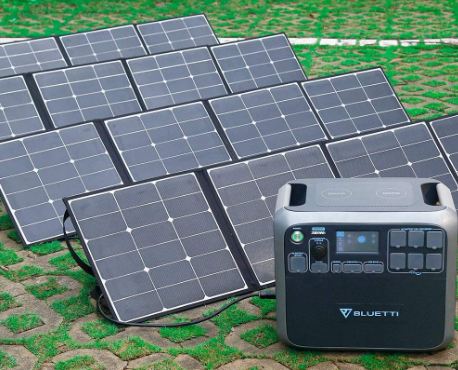
How To Properly Size a Backup Solar Generator For Your Home
The average U.S. home consumes 26,000 watt-hours of electrical power every day, or about 1,100 watts per hour.
But this power is consumed in bursts of peak activity, which is why most backup solar generators for home standby power are rated to supply 2,000-5,000 watts of power.
Question is, how long will your backup solar generator keep the power flowing?
This article explains how to properly size a backup solar generator for your home, so you will know exactly what you are buying and you can estimate how long it will keep your appliances on, during a loss of power.
I will help you answer the following four questions:
- How much energy will I need to power my devices/appliances during a power outage?
- How long can I run my appliances before the batteries run out?
- How long will it take to recharge my backup solar generator’s batteries, using solar panels?
- What additional features should I consider before buying?
Please note: to properly size a home backup generator, you need to consider half a dozen important variables and do some quick calculations. The calculations are not difficult to do, but it will take you at least 30 minutes to do a proper job. We provide a handy appliance power estimation worksheet below that you can use to speed things up.
STEP 1: How Much Power Do You Need (in Watts)?
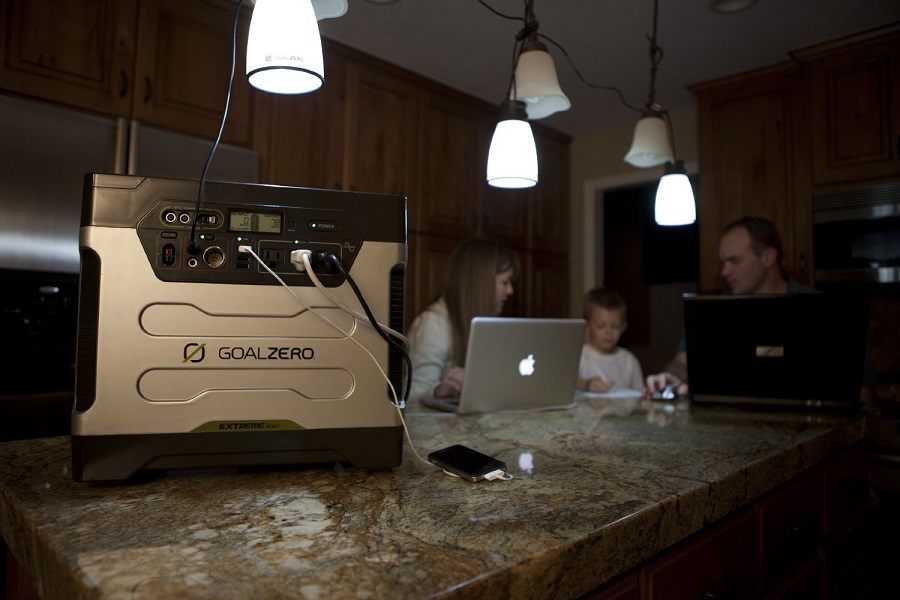 The most common expectation for a home backup solar generator is that it will provide enough electricity to power the most critical and most commonly-needed appliances during a power outage, for a set number of days.
The most common expectation for a home backup solar generator is that it will provide enough electricity to power the most critical and most commonly-needed appliances during a power outage, for a set number of days.
That backup power is measured in watts.
Now, most people don’t really power their whole home after a blackout; they just need the basics.
Your list of “basics” may include a lot of devices, though: a refrigerator, a microwave several times a day, indoor lighting, keeping a laptop or two going, using a CPAP at night, keeping your phones charged, and perhaps running your radio or television a few hours a night.
You may also want to power an air conditioning unit or heater, depending on your local weather conditions and the health of the people in your home.
In order to figure out how much power you need, then, the first question you have to answer is:
What devices and appliances will you need during a blackout?
Make a list of all the devices you will want to power during a blackout.
Then, note the Voltage and Power Rating (watts) for each.

You can find voltage and wattage on the manufacturer’s label of any US electrical device made during the past 75 years.
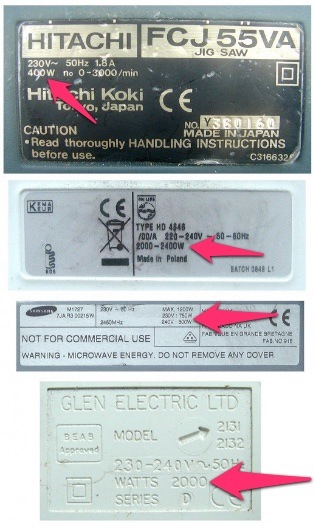
Older Manufacturer Labels showing Power Rating
If you don’t have time to look at every appliance for its voltage and Power Rating, then you can also the estimated Power Ratings in our Appliance Energy Consumption Chart.
Next, for each appliance/device you want to keep on, you want to calculate the Average Daily Watts consumed by each. To do that, for each device:
- Look up the Power Rating (watts per hour) from our chart or your appliance’s manufacturer label.
- Calculate the Average Daily Watts by multiplying the Power Rating (in Watts) times the number of hours you want to run the device, each day.
- Estimate the Peak Surge Wattage by selecting the largest Peak Wattage
Keep in mind that in an emergency scenario, appliance/device usage will differ from your normal on-the-grid life.
For example, your lights will probably only be on a few hours per night. You may use your television much less. And you may not use your air conditioner at all.
You may also be OK not using your washer and dryer for a few days (wait until you see how much power they consume!).
Add up the Average Daily Watts for all of your devices, and you will probably be within +/-30% of total daily power requirement during a blackout or an emergency.
TIP: Use This Appliance Power Requirement Worksheet To Calculate Your Daily Power Requirement
To keep things simple, just clone the following Google Docs worksheet to calculate your daily and peak power requirements – or click here to download an Excel copy for your own use.
How to use the worksheet:
- Enter the number of appliances (‘# Devices’) you need to keep running and the amount of time you plan to use each device every day (‘Hrs/Day (ea.)’).
- The worksheet will automatically calculate your total Energy Storage (Wh/day) and Peak Power Rating (Watts).
- Use the Storage (Wh) and Power Rating (Watts) to select the right solar generator for your home backup, outdoor/RV or portable solar generator power rating.
About Appliance Power Ratings…
Almost all electric-powered devices and appliances list their power consumption, in watts, on their manufacturer’s label.
Wattage is a measure of the power consumed by a device over time. 1000 Watts = 1 kiloWatt, or kW.
Manufacturer labels also carry the appliance’s Voltage rating:
- If your appliance uses AC power (alternating current), then your voltage will be 110-120V or 220-240V at 60 Hz in the US; or, 220-240V at 50 Hz internationally.
- If your device is powered by DC power (direct current), then 12 and 24 VDC are the most common.
If a device’s Wattage is not listed on the manufacturer label, then you can calculate the power consumption in Watts by multiplying its Voltage times its Amperage. This equation is true whether working with Alternating Current (AC) or Direct Current (DC) voltage.
Amperage is device-specific; it measures the electrical load, or current, a device requires to start up (surge current) and run continuously.
The most important thing you need to understand is that an appliance’s Power Rating (in Watts) does NOT necessarily equal the amount of power it will draw from your generator batteries, every hour, on average, during a blackout.
The actual energy it draws will depend on the nature of the device.
To learn more, see: “Deciphering Appliance Power Ratings“
Adjust Your Estimate for Variable-Power Appliances
Most electric appliances draw power evenly over time; in this case, the Power Rating is a good approximation of the Watts per hour your device will draw from your generator while it is turned on. These are called fixed-rate appliances.
Examples of fixed-rate appliances include devices that use rechargeable batteries, like laptops and cell phones. They also include incandescent & LED light bulbs, radios, TVs and PCs.
However, some devices in your home use variable power. Typically, this means they draw a lot of power up front to get moving, then consume a small amount of power over time to keep them running. These are called variable-power appliances.
Examples of variable-power appliances include a coffee maker; a bread maker; florescent light bulbs; and, most air conditioners. For a fixed-rate appliance rated at 1000 Watts, its power consumption will reliably be 1000 Watts per hour, while running.
But for a variable-power appliance, the Power Rating is not a good indicator of how much power the device will draw from batteries over time. Let’s see how this works in the real world:
Let’s say you use an electric coffee maker, a variable power appliance, that’s rated at 1000 Watts. As we explained, this is the coffee maker’s ‘peak power consumption’, or the power it consumes when brewing – for an entire hour.

Mmmm… can’t wait 🙂
In the real world, though, most electric coffee makers only take a few minutes to brew. After brewing, the hot plate will only consume maybe 200 Watts per hour. Then, when the hot plate turns off, the power consumption goes to zero.
Let’s say your coffee maker brews for six minutes and keeps your coffee warm for 54 more minutes, before shutting off.
In this case, you will consume 1000(0.1)+200(0.9) or 280 W in that first hour.
The rest of the day, it’s turned off.
Later, if you want to reheat that cup of coffee in your 1000W microwave for 1.5 minutes on high, you’ll use another 1000(1.5/60) or 25 W.
As you can see, your daily coffee ritual actually consumes only 305 watts per day, or 12.7 watts per hour, of energy on average, each day. Not 1000 Watts per hour, the coffee maker’s Power rating.
Big difference!
Another example of a variable-power appliance is your refrigerator.
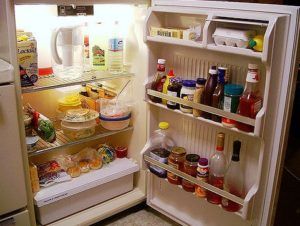
A 110V refrigerator may be rated at 6 amps for a power rating of 660 watts, but that’s what it draws with its door open, the defrost cycle on and running the ice maker full blast.
A refrigerator’s typical hourly power consumption is far less in the real world, of course, because a fridge runs 23.9 hours/day with the door closed and only needs enough power to keep its well-insulated interior at the same temperature.
In the real world, then, your fridge will probably only consume 100 watts per hour, as the compressor cycles.
So, your fridge really only consumes about 2,400 watts per day (24 hours x 100W/hour), which is 6 times less than its rating of 660 watts per hour.
A Quick Way To Adjust for Variable Power Appliances
Don’t worry, you don’t need to do a detailed calculation for every device in your home (unless you want to).
A good rule of thumb for the hourly power requirement of a variable power device is to take 20% of the stated maximum power consumption.
So, to calculate your Average Daily Watts for each variable power device you need to run during a blackout, multiply its Power Rating x 24 hours x 20%.
Want An Even More Accurate Estimate?
For an even more accurate measurement of actual power usage, you’ll have to use an electricity monitoring device to measure the true energy consumption of your devices in question.
You can measure usage over the course of a day, week, or even month to get a more accurate estimate of average hourly & daily usage.
STEP 2: How Much Battery Capacity Do You Need (Watt-hours)?
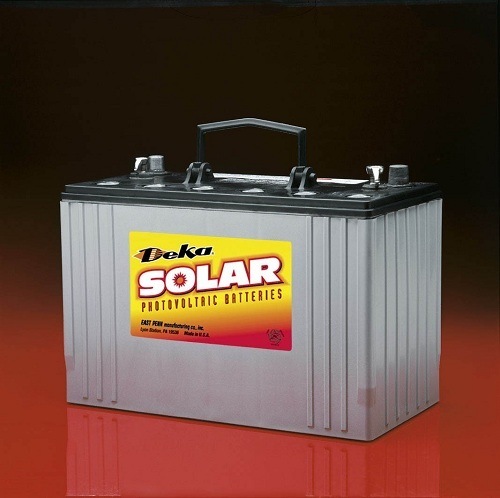
The next important consideration is how much battery capacity (in watt-hours) you will need to successfully power your devices without access to a live electrical grid.
To calculate how much Backup Capacity (in watt-hours) that you’ll need available for use in your generator batteries to keep your home running during an outage, follow these steps:
- Calculate your Daily Power Requirement (in watts) by summing the Average Daily Watts and Peak Watts for all devices on your list.
- Note the number of hours you per day you need to use each appliance.
- Note the number of days you want to run each appliance.
- Multiply the number of hours per day of run time by the number of days to calculate the total number of hours of power supply you’ll need for each device.
- Multiply the number of hours for each appliances times the wattage for each appliance to calculate the battery capacity needed for each appliance (in watt-hours).
- Sum the Total watt-hours of energy you’ll need to power all of your appliances off-grid.
Now you know how many watt-hours of usable battery capacity you need in your backup solar generator.
Well, almost…
Adjust for Maximum Battery Discharge
The actual battery capacity you need depends on how low your batteries can discharge before recharging.
For Lithium Ion, lead acid, and AGM batteries the maximum rated discharge is typically 50%. If you plan on using these types of batteries, then you will need twice the capacity calculated above to provide the power you need at maximum discharge. So double your watt-hours calculated above to determine your required solar generator capacity.
For Lithium Iron Phosphate (LiFePO4) batteries, you can assume 80% discharge. In this case, add 25% more capacity to your total watt-hour requirement.
As you can see, one of the benefits of buying LiFePO4 batteries is you need fewer to provide the same amount of usable power.
STEP 3: How Long Will It Take To Recharge Batteries Using Solar Panels?
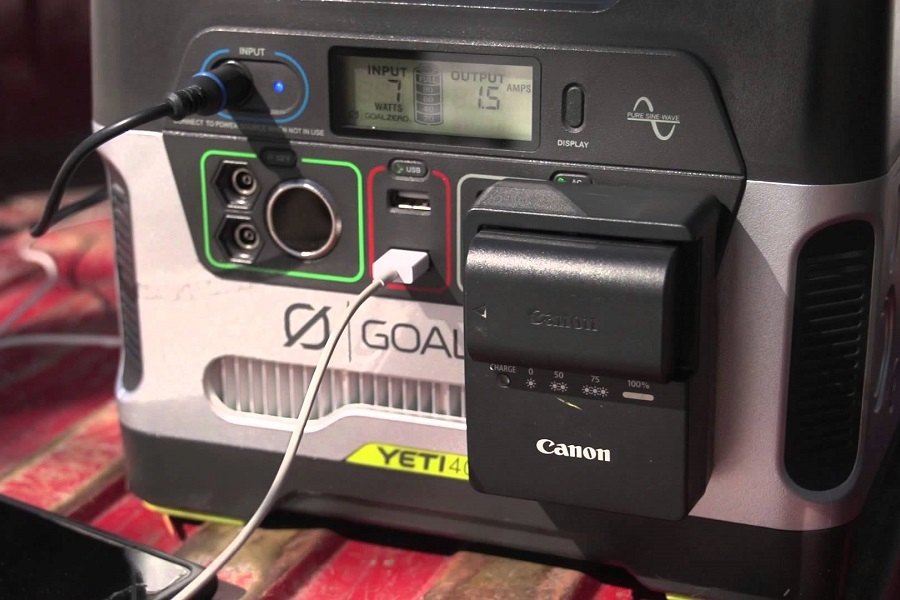
Most backup solar generators are designed to stay fully charged until needed.
Then, you run your appliances on the generator’s batteries, until they run out of power.
This is the safest planning assumption to use when specifying a solar generator backup system: assume that your solar panels won’t recharge the system, while it’s being used.
That said, some solar generators offer the option to trickle-charge your batteries using solar power while the batteries are being used to power your home.
In practice, though, most solar generators cannot trickle-charge the batteries nearly fast enough to keep up with demand of your appliances.
They will eventually run out of power, as the following real-world test of a GoalZero 1250 shows:

Test Results: Energy Usage vs. Battery Capacity for a GoalZero Yeti 1250 charged using one 90W solar panel (click to enlarge)
If your system allows trickle-charging while its batteries are being drained, then knowing how much time it takes to recharge your batteries will tell you how long your system will keep running beyond the capacity of the initial charge.
The time it takes to recharge your batteries is a function of the solar panels you have exposed to a sunny sky and the power rating of the solar panels you’re using (watts per hour).
You also need to consider the maximum speed at which your batteries can recharge, known as the Maximum Trickle Charge Rate (Watts/Hour). This rate is mostly determined by the battery type (lithium ion, gel, lead-acid, etc.).
If your solar panel power output exceeds the rate a which your batteries can be trickle-charged, then you’ve oversized your panels. But that’s OK – on cloudy days, you will be happy that you did.
To calculate your Battery Recharge Time of a particular backup solar generator that allows for trickle-charging while in use:
- Note the Backup Energy Storage (in Watt-hours) needed to run all of your appliances during an emergency outage. (“STEP 1:” , above).
- Calculate your Total Solar Panel Power Supply (Watts/hour) by adding up the power ratings for all Solar Panels available to charge your system.
- Note the Maximum Trickle Charge Rate (Watts/hour) of your solar generator.
- Calculate your Maximum Recharge Rate (watts/hour) by selecting the lesser between the Maximum Trickle Charge Rate and Total Solar Panel Power Supply.
- To calculate your Battery Recharge Time, divide your Backup Energy Storage (watts) by your Maximum Recharge Rate (watts per hour) to get the number of hours of daylight required to recharge your batteries.
If your Battery Recharge Time is less than 4 hours, then your system should continue to provide power indefinitely, constantly replenishing itself on solar power alone. This is very rare, however.
If your Battery Recharge Time is longer than 4 hours, then your generator will likely run out of battery capacity at some point.
As you can see, the ability to trickle-charge your solar generator while it’s being used can lower the total cost of your system significantly, because it requires fewer batteries to provide you with the same number of days of power.
So, make sure you look for this feature.
STEP 4: Consider Other Features
Additional backup solar generator features may be important to you, depending upon your lifestyle and emergency requirements.
Proximity to Solar Panels
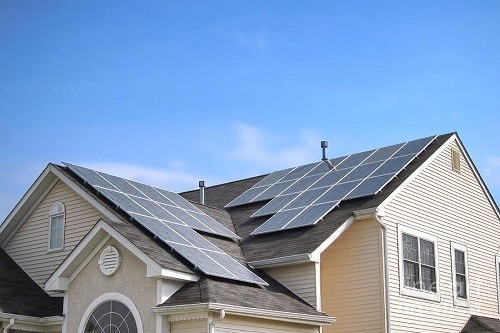
Some generators allow for solar panels to be located far away from the generator itself, while others have panels mounted to or closely linked to the generator unit.
Protection from Damage & Small Hands
Some generators are housed in steel panel boxes or cages, which provide additional protection from shock or tampering in environments in which children might be present.
Power Output Ports
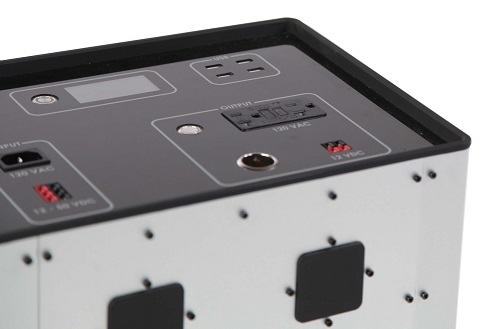
All home backup solar generators typically provide several 110/220VAC plugs. Some also come with USB chargers and 12V/24VDC outlets.
A generator’s power output is limited by three things: the number of outlets, its inverter surge rating and its continuous power rating.
The number of individual outlets on a generator is therefore directly related to its total power output.
So don’t assume that purchasing a cheaper generator with a few outlets, and then plugging in a power strip to extend it, is a good idea. It’s not. You may overload the generator.
Digital Display
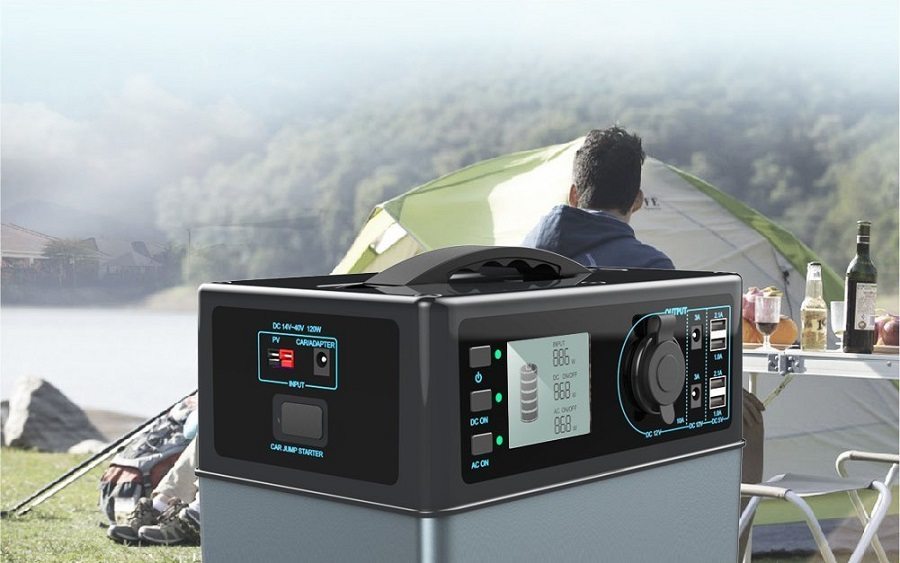
Most portable solar generators have simple, digital displays that show remaining stored energy, current energy usage, and any problems the unit might be having.
Some provide full LCD screens with programmable features.
Expandability
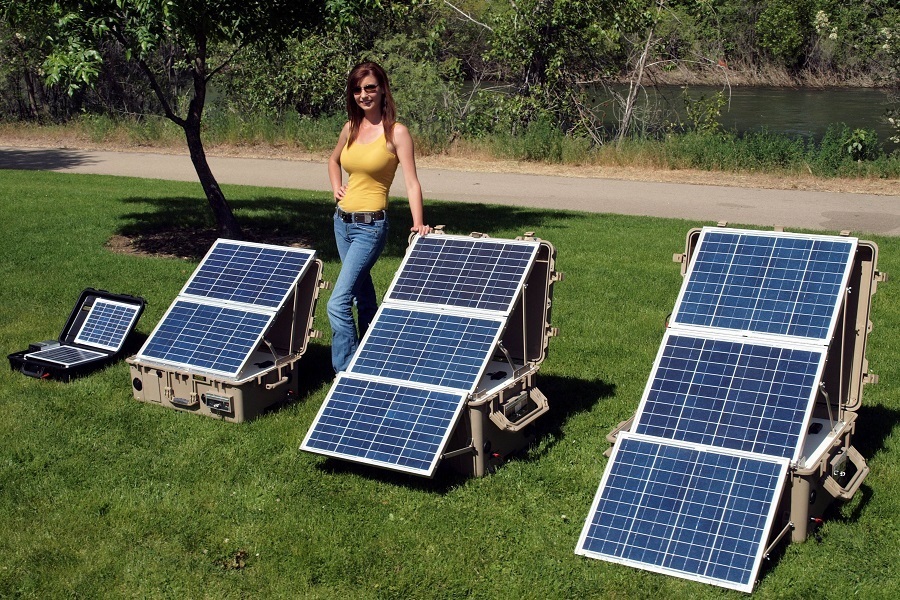
Many home backup solar generators today can be linked together, or chained, with other units or expandable battery packs to provide more whole-house capacity. But you need to verify this ability.
Others will allow you to add extra solar panels to increase charging speeds.
STEP 5. Time To Choose Your Solar Generator
OK, now that you know how much capacity and output power you need, you are ready to shop for a backup solar generator.
There are several things you want to check (or calculate) on every generator you look at, to make sure it’s sized correctly for your home:
Energy Capacity (Watt-hours)
This is the energy storage capacity of the batteries, usually listed in Watt-Hours or Amp-Hours.
Peak Power Rating (Watts)
Make sure you select a generator that has a higher Peak Power Rating than your peak daily power requirement.
Power Outlet Ports
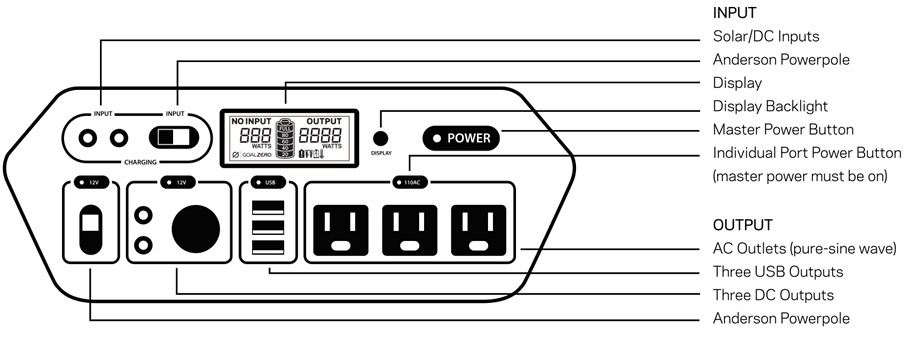
GoalZero Yeti: power outlet ports
Make sure there are enough ports to supply your appliances (without using extension panels); and, make sure you have the right number of each type to feed your appliances and devices.
Be practical about sharing ports, though – you don’t really need 4 USB ports to keep 4 phones charged, for example.
Time To Recharge
How long will it takes to recharge the batteries (hours) with a given set of solar panels?
See Step 3. above to estimate this accurately.
Buy more solar panels, if you want to recharge faster.
Beware of Hidden Input Charge Limits
Finally, keep in mind that every generator’s electrical circuitry is different.
The amount of power it can deliver continuously and at peak demand is limited by internal components including the inverter, circuit breakers and fuses, and each plug/socket’s amperage limit.
For example, most power outlets in a house are often protected to 15 amps, so most home generators are sized to provide a power per plug up to this rating.
Take care to read the fine print for any special restrictions. These kinds of hidden restrictions are more common with do-it-yourself and cheaper backup solar generator systems.
NOTE: This is one of the reasons we strongly recommend purchasing pre-tested, self-contained solar generator systems from reputable manufacturers and avoid building one from scratch. They come equipped with charge controllers, battery management systems, and inverters correctly sized for their power rating and capacity.
Now You’re Ready To Buy
Now that you know how much power & capacity you need (daily and peak), what features you want and how long your solar generator backup system will keep your devices running…
…it’s time to select the right solar backup system for your home.
See the Best Home Backup Solar Generators Selling Today.
More Solar Generator Resources On This Site:
About the Author David Roberts
I'm a Mechanical Engineer who's obsessed with solar energy and sustainable living.

